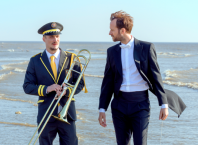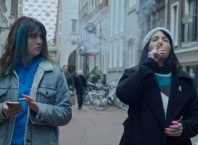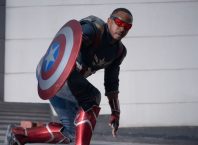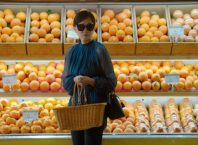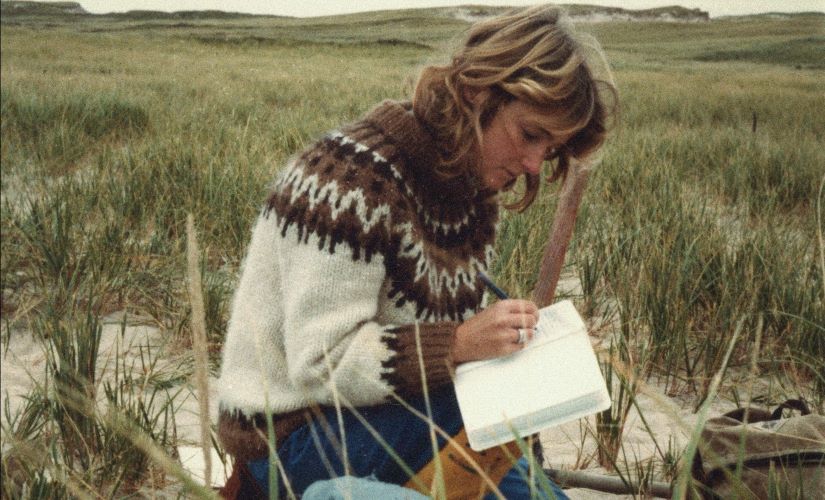
Geographies of Solitude takes the viewer into an immersive experience, a meeting place of nature, science, and art. The visual storytelling and soundscape of Jacquelyn Mills’ documentary are as fascinating as her protagonist, Zoe Lucas, an artist, naturalist, and environmentalist who has made Sable Island her home for over 40 years. The island itself, a long, narrow crescent only two miles wide off the coast of Nova Scotia, is a central character in the film, as Lucas says, describing her first encounter with the island: “it was the landscape that enthralled me.”
The viewer sees the island through the eyes and actions of Lucas, as Mills accompanies her on her explorations and research. In this close focus on Lucas and her work on the island, it is interesting to note what is not discussed. Very little information is given about her past, and only the slightest intimation of her inner life, thoughts and feelings is presented, and that – only towards the very end of the film. One comes to know Lucas through her relationship to the island.
An art student when she first came to the island as a volunteer in the 1970s, Lucas was drawn back time and again, until ultimately, she settled there permanently. Declared a nature reserve in 2013, protected and managed by Parks Canada, the island has very little human presence. Yet as Lucas collects plastic waste washed up on the shores and retrieved from the carcasses of dead animals, human impact on the environment is ever-present. Lucas collects and catalogs everything she finds, records it on spreadsheets and tracks the changes. She has collected balloon debris for 15 years. There is a calm cheerfulness to her demeanor as she examines the corpse of a horse, noting that his body will now provide nourishment for birds and invertebrates, the cycle of nature.
Everything she does is imbued with an aesthetic sensibility, an appreciation of the senses. Lucas is, in her own unique way, still very much an artist, even though she works beyond the boundaries of what we are accustomed to considering “art”. As she mounts colorful balloons on a board, cleanses and collects plastic remnants or skulls of horses, there is a beauty in her work.
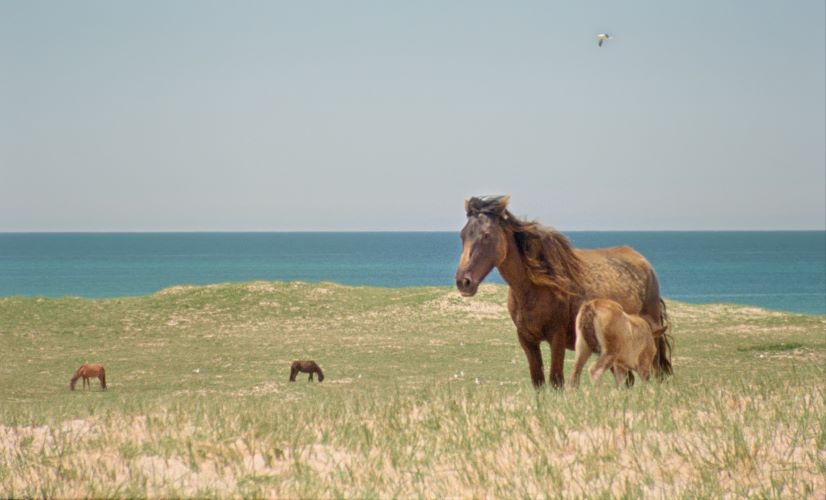
Shot on film, the scenes of the island have a quietly mesmerizing beauty. Horses drinking from a freshwater pond, a wide sky full of stars, a caterpillar slowly making the leap from one blade of grass to the next. It is a film that invites the viewer to slow down and take it all in, see things from a different perspective. As they roam the island, Mills experiments with light and sound, connecting a contact microphone to an abandoned wood cabin to hear the sounds within the wood, burying film in juniper roots, creating music from the recorded footsteps of a beetle. Art and environmental action merge. As Lucas and Mills roam the island, their journey together is a collaborative work of art.
Geographies of Solitude will participate in the International Competition at Docaviv 2022
Screening dates and times may be found on the Docaviv website
Geographies of Solitude
Director: Jacquelyn Mills; Production: Rosalie Chicoine Perreault, Jacquelyn Mills; Editing: Jacquelyn Mills, Pablo Alvarez-Mesa; Cinematography: Jacquelyn Mills, Scott Moore; Sound Design: Andreas Mendritzki, Jacquelyn Mills


